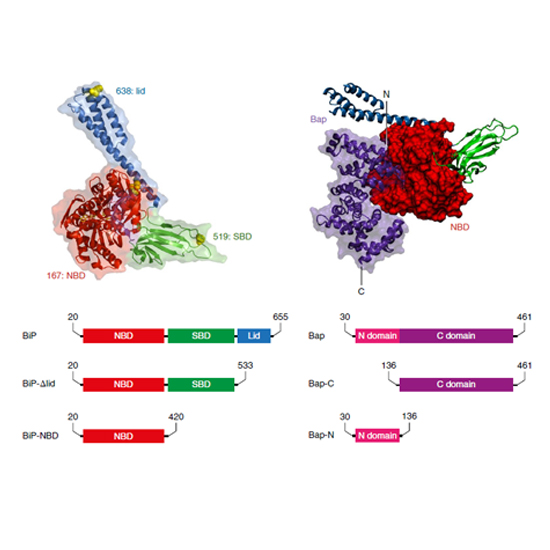Bap (Sil1) regulates the molecular chaperone BiP by coupling release of nucleotide and substrate
01-Jan-1970
Nature Structural & Molecular Biology, volume 25, 90–100 (2018), doi:10.1038/s41594-017-0012-6
Nature Structural & Molecular Biology, online article
BiP is the endoplasmic member of the Hsp70 family. BiP is regulated by several co-chaperones including the nucleotide-exchange factor (NEF) Bap (Sil1 in yeast). Bap is a two-domain protein. The interaction of the Bap C-terminal domain with the BiP ATPase domain is sufficient for its weak NEF activity. However, stimulation of the BiP ATPase activity requires full-length Bap, suggesting a complex interplay of these two factors. Here, single-molecule FRET experiments with mammalian proteins reveal that Bap affects the conformation of both BiP domains, including the lid subdomain, which is important for substrate binding. The largely unstructured Bap N-terminal domain promotes the substrate release from BiP. Thus, Bap is a conformational regulator affecting both nucleotide and substrate interactions. The preferential interaction with BiP in its ADP state places Bap at a late stage of the chaperone cycle, in which it coordinates release of substrate and ADP, thereby resetting BiP for ATP and substrate binding.











